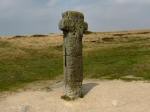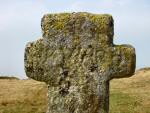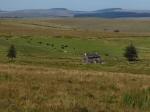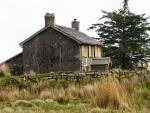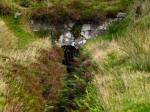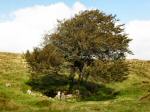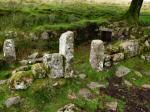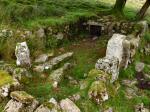There are 132 known crosses within the Dartmoor
National Park boundary but probably the most famous of them is Nun's or
Siward's Cross. It stands at the junction of two of the ancient tracks
that linked the abbeys of Tavistock, Buckland and Buckfast – the
Abbots’ way and the Monks’ Path. It was first recorded in
the 1240 Perambulation of the Forest of Dartmoor as a boundary mark of
the King’s Forest although it was probably erected during Edward
the Confessor's reign (1042–1066). Historically known as Siward's
Cross, named after Earl Siward, a Saxon, who owned the lands around Tavistock
prior to the Norman Conquest, the reasons for its more common name of
Nun's Cross are unclear. It was first recorded as such in 1699 but there
is no evidence linking either the cross or the area with any nuns. William
Crossing gave a plausible explanation, in that it is a derivation of the
Cornu-Celtic word ‘Nans’ meaning a valley, dale or ravine,
however the local geography of its situation does not seem to give much
weight to this theory. It was knocked down in 1846 and the shaft broken
but it was restored in 1848 at the orders of Sir Ralph Lopes. It stands
6 feet 10 inches tall (2.08 metres) and is the largest recorded cross
on the moor. Both faces of the cross have badly weathered inscriptions
which have had various interpretations. Some say the eastern face bears
the word ‘SIWARD’ or ‘SYWARD’ and the western
face has the inscription ‘BOC LOND’.
The cross stands near Nuns Cross Farm which is about 2.5 miles from Princetown.
The farm was abandoned in the 1950’s, was then used as a base for
survival training by the Royal Navy before being leased by the Duchy of
Cornwall for its current use as an Adventure Centre. Nearby the only underground
section of Devonport Leat can be found in the form of a 500 yard long
tunnel situated south of the farm which reappears by the ruins of an old
Blacksmith’s Shop associated with former tin workings. |
